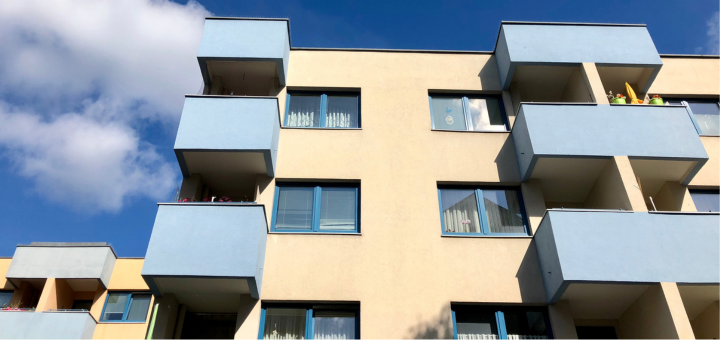Australia’s prosperity and success is no longer defined solely by GDP, but also by the health and wellbeing of our population. In this article we explore how our ability to access ‘high quality health services’ and how we feel about our own health and wellbeing influence quality of life. The 2023 National Liveability Survey* was recently conducted to explore the values, experiences and future needs of Australians. This survey is a pivotal resource for councils and other organisations who subscribe to our Living in Place community survey to compare the values and experiences of their own community to the rest of Australia.
Australia is in a phase of significant demographic change. An ageing population is putting pressure on our healthcare sector and our ability to meet the health and wellbeing needs of our residents poses one of our greatest challenges over the coming years.
The 2023 Intergenerational Report estimates the care and support workforce will need to double over the next two decades, and around 40 per cent of the projected increase in Australian Government expenditure over the next 40 years will be due to demographic ageing.
Health is clearly an issue of importance to the nation’s future prosperity, and to underpin the liveability of local communities.
Why health and wellbeing matters for liveability
Many nations have begun to acknowledge that the traditional measure of GDP does not fully capture a nation’s prosperity. The expanded definitions of national success propose that the health and wellbeing of residents is just as important as its economic productivity.
Here in Australia, this is reflected in the Federal Government’s ‘Measuring What Matters‘ Framework. In the Framework, a prosperous society is defined (among other things) as one in which people are in good physical and mental health, can access services when they need, and have the information they require to take action to improve their health.
How do we feel about our own health and wellbeing?
According to our 2023 National Liveability Survey, the Health and Wellbeing Index (created by combining residents’ assessments of their own current physical health, mental health and social wellbeing) across Australia currently sits at 7.1/10. The Index result was consistent across metropolitan (7.2) and regional Australia (7.0).
At the national level, residents rated their mental health (7.3/10) slightly higher than their physical health and social wellbeing (both 7.0/10).
However, looking at the data across different demographics, it reveals that:
- People aged 18-34 rate their own mental health and social wellbeing significantly poorer than other age groups (6.8/10 and 6.6/10 respectively). Positively, many do feel things will improve, with a much higher proportion of 18-34 year olds indicating that they expect their mental health to get better over the next twelve months (34% compared to 24% of Australians).
- People aged 60+rate their mental health (8.0/10) and social wellbeing (7.5/10) much more positively than the other age groups.
- Single parents with dependent children ( about 10% of all households) rate their mental health (6.6/10) and social wellbeing (6.3/10) far lower than couples with dependent children.
- People who have not experienced a chronic health condition rate their current mental health to be better than those who are managing a chronic health condition (8.0/10 compared to 6.9/10)
Unsurprisingly, those who have a chronic illness, or have suffered one in the past, place significantly higher value on access to health services than those who haven’t. What is stark is that people experiencing chronic mental health conditions report poorer experiences with accessing ‘high quality health services‘ compared to people with other chronic conditions and those without any chronic illness. This highlights the need to double down on investment into mental health services in Australia.
Finally, our level of health and wellbeing is correlated with other areas impacting liveability including financial circumstances and social outcomes. Those that rate their physical health as poor (0-4 out of 10) also rate their financial circumstances and social wellbeing significantly lower than average (4.0 and 4.2/10 respectively).
How Australians value and experience ‘high quality health services‘

Source: https://views.id.com.au/australia
Australians place a very high value on access to healthcare, but their experiences with local health services are not always positive. Access to ‘high quality health services’ selected as the fourth most important attribute making Australia a great place to live, but local experiences of health services ranked only 10th out of 16 attributes, with a score of 6.2 out of 10.
The results reveal that our age and where we live greatly influence both the value we place on ‘high quality health services‘ and our experience in accessing them.
Typically, people in regional and rural areas and those aged 60+ place higher importance on access to ‘high quality health services‘. Given there is a higher percentage of people aged 60+ living in regional and rural Australia than in metropolitan Australia (28% vs 21% in the 2021 ABS Census), it is likely there is a relationship between these two dynamics.
Concerningly, those in regional and rural Australia also report the poorest local experiences in accessing high-quality health care services (5.6/10 compared to 6.5/10 for metropolitan respondents). Smaller regional centres (< 15 thousand residents) report the poorest local experiences in accessing high quality health services (4.6/10).
This combination of high importance and poorer local area experiences makes a significant contribution to the lower overall liveability for regional and rural Australia (Overall Liveability Index of 61.2 compared to 64.0 for metropolitan Australia).
Delivery of ‘high quality health services‘ declines as we move from the inner city through the suburban fringe and into regional Australia. Accessing health services in regional Australia is affected by challenges like attracting qualified health practitioners, longer travel distances to access services, and higher rates of risky health behaviours, among other things.
Despite these challenges, the case for investing in regional health services is clear. Any improvement in the local experiences will produce an above average advancement in quality of life and liveability. This attracts more people to our regional areas, boosting the local economy across many dimensions.
Local councils have a role to play in influencing the provision of, and access to, health services and advocating on their community’s behalf with state and federal government decision makers. Understanding the value residents place on access to health services, and how they experience health services in their local area, provides a basis for informed decision making and strengthens the argument for reform.
Summary
Access to ‘high quality health services’ and care impacts our quality of life. Healthy communities are productive, connected and vibrant communities.
As the Australian population ages, and we become sicker, the health care sector will be under increasing pressure to meet growing demand. Where we live, our age and our current health influence how much we value access to these health services – and how well we feel they are being delivered in our local community. Young people with mental health conditions and those living in regional and rural Australia are particularly vulnerable to poorer experiences of health and wellbeing.
Further reading…
Other articles in this series look at liveability in relation to:
* The 2023 National Liveability Survey was conducted by the .id Community Views social research team in partnership with Ipsos Public Affairs. Please get in touch (views@id.com.au) if you’d like to understand how high-quality health services are experienced where you live. Access more information about the Living in Place community survey HERE, and check out which Councils currently subscribe to the survey HERE.










